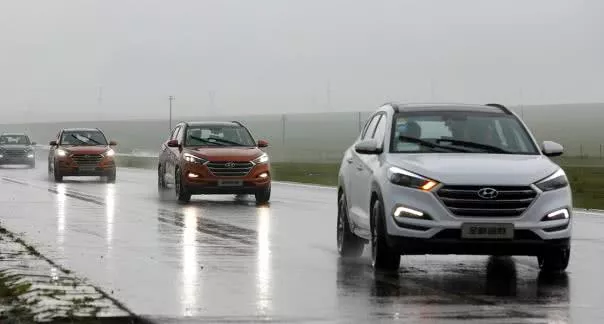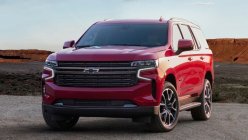Wet season is only one month away. Here are 5 essential car driving tips you need to know to survive the upcoming rainy weather in the Philippines.
Tip 1: Slow down. Slower. Nope, even slower. There you go.
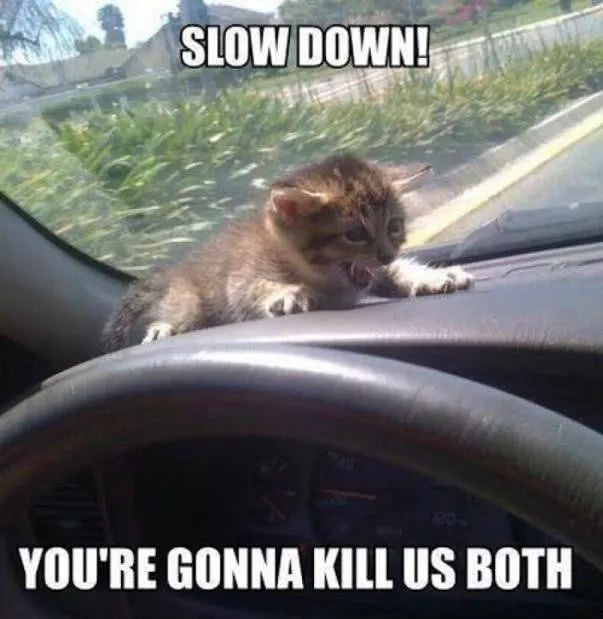
Reduce your speed by about a third while driving in rainy weather
Wet roadways reduce the friction between the tire and the road. You might lose about one-third of your traction in rainy condition.
That is why this recommendation makes sense: Reduce your speed by about a third while driving in rainy or wet weather. For instance, if the speed limit is 50 mph, you should aim for under 35 mph. Remember, this is not a hard statistic but a rule of thumb.
>>> View more: How to survive driving in the Philippines
Tip 2: Keep space. Old rule out. New rules in.

Staying 3 – 5 seconds behind the vehicle in front of you
You must have known the rule about keeping a certain number of car lengths between you and the vehicle in front of you.
Forget this old rule!
Remember these driving lessons instead:
Tip 3: Respond to a skid. Do things one-at-a-time.

Avoid slamming on the brakes as this might further upset the car’s balance
Even careful drivers can experience skids. If you feel your car begin to skid, it’s significant to not panic and follow these basic steps:
Tip 4: Save all hotline numbers. Download necessary mobile apps.

Don’t underestimate the traffic updates from the radio station or mobile application
Being informed always save you from a lot of unnecessary troubles. Don’t underestimate the weather forecast or traffic updates from the radio station or mobile application. Such information is particularly helpful in rainy days.
Here are some suggestions for your consideration:
>>> View more: Top 6 must-have apps for Filipino drivers
Tip 5: Never attempt to cross running water. Even with an all-wheel drive car.
Real life isn’t an SUV advertisement. If the force of water is greater than the weight of your car, you are possibly in a lot of trouble. Crossing a pool at high speed might also lead you to hydroplane. Even an all-wheel drive car won’t help in these cases.
And if you are still reading, we have an extra road safety rule for you: Get a Crossover or SUV.
The instant flooding and pothole-infested roads are viewed as a norm in daily driving, particularly in the Philippines. A crossover/SUV can handle poor driving conditions that you probably face during the wet season. What is more, it is still practical enough all year-round, regardless of the weather.
So if you are at the stage of considering what car to buy and of course, if your budget allows, this extra tip can be of some help.
To read more useful tips and advice on car buying/selling, maintenance and driving, please click here.

Reduce your speed by about a third while driving in rainy weather
Wet roadways reduce the friction between the tire and the road. You might lose about one-third of your traction in rainy condition.
That is why this recommendation makes sense: Reduce your speed by about a third while driving in rainy or wet weather. For instance, if the speed limit is 50 mph, you should aim for under 35 mph. Remember, this is not a hard statistic but a rule of thumb.
>>> View more: How to survive driving in the Philippines
Tip 2: Keep space. Old rule out. New rules in.

Staying 3 – 5 seconds behind the vehicle in front of you
You must have known the rule about keeping a certain number of car lengths between you and the vehicle in front of you.
Forget this old rule!
Remember these driving lessons instead:
- Staying 3 – 5 seconds behind the vehicle in front of you. Watch it as it passes a fixed marker, such as a street light. Then count from 1 to 5, meaning you should stay about 5 seconds behind.
- For each additional driving challenge, add another second. In case of driving in rain at night, you are supposed to be 6 – 7 seconds behind the car in front of you.
- If you are stuck in heavy traffic, try to keep from being boxed in by cars in the lanes on either side of you. By doing so, you will have an easy out in case the car ahead of you stops unexpectedly.
Tip 3: Respond to a skid. Do things one-at-a-time.
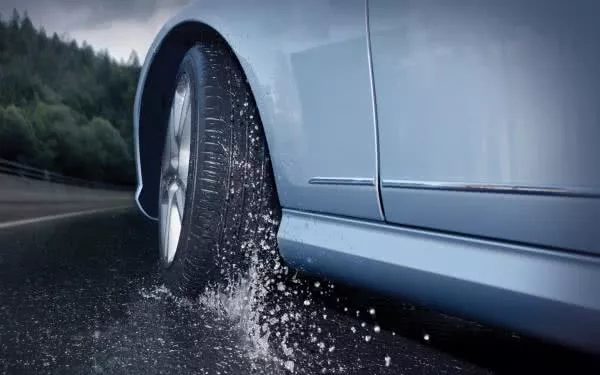
Avoid slamming on the brakes as this might further upset the car’s balance
Even careful drivers can experience skids. If you feel your car begin to skid, it’s significant to not panic and follow these basic steps:
- Continue to look and steer in the direction in which you want the car to go. This strategy works for both front and rear skids.
- Avoid slamming on the brakes as this might further upset the car’s balance and make it harder to control.
- Gently ease your foot off the gas. This may transfer enough weight forward so that your front tires regain contact with the road. If not, try gently squeezing your brakes to slow the vehicle down and transfer weight to the front tires.
- Remember to do things one-at-a-time. Brake, then turn, then accelerate.
Tip 4: Save all hotline numbers. Download necessary mobile apps.
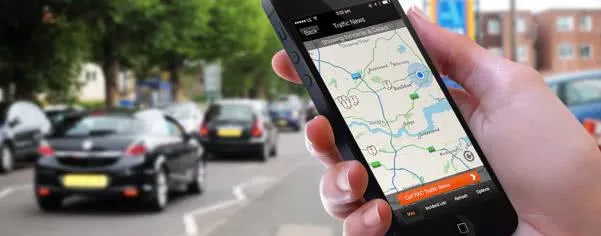
Don’t underestimate the traffic updates from the radio station or mobile application
Being informed always save you from a lot of unnecessary troubles. Don’t underestimate the weather forecast or traffic updates from the radio station or mobile application. Such information is particularly helpful in rainy days.
Here are some suggestions for your consideration:
- SLEX – (02) 584-4389
- NLEX – (02) 580-8910
- MMDA – 136, 882-0925 (flood control)
- Your favorite radio station
- Barangay Captains or Tanod
- Rescue
- Roadside Assistance
>>> View more: Top 6 must-have apps for Filipino drivers
Tip 5: Never attempt to cross running water. Even with an all-wheel drive car.
Real life isn’t an SUV advertisement. If the force of water is greater than the weight of your car, you are possibly in a lot of trouble. Crossing a pool at high speed might also lead you to hydroplane. Even an all-wheel drive car won’t help in these cases.
And if you are still reading, we have an extra road safety rule for you: Get a Crossover or SUV.
The instant flooding and pothole-infested roads are viewed as a norm in daily driving, particularly in the Philippines. A crossover/SUV can handle poor driving conditions that you probably face during the wet season. What is more, it is still practical enough all year-round, regardless of the weather.
So if you are at the stage of considering what car to buy and of course, if your budget allows, this extra tip can be of some help.
To read more useful tips and advice on car buying/selling, maintenance and driving, please click here.
Recent posts
- MIAS 2019: The Hyundai Ioniq Electric debuts in the Philippines Sep 30, 2020
- Toyota Prius 2019 Facelift receives a milder and calmer look Dec 25, 2023
- Hybrid cars in the Philippines: Pros & Cons and Differences from Electric cars Aug 16, 2023
- [MIAS 2018] Hyundai Ioniq 2018 hybrid - The most affordable hybrid Sep 30, 2020
- Toyota Prius 2018 Philippines: Hybrid model, Price & Specs Review Mar 01, 2021
